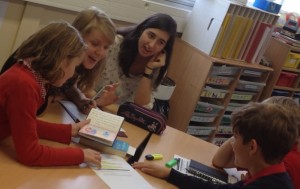After studying a complex topic, challenge students to turn it into an illustrated storybook that can be understood by primary school students. Spend time in class talking through the main concepts, events and personalities that should be covered in a brief story. Consider too which images could be used to bring the subject to life.
In themselves these books can be useful revision aids, and could be peer-assessed. Even better however is to actually read them to students in a local primary school.
I use this technique successfully in two major projects:
- Henry VIII – Hero or Villain?
- In this exercise, Year 8 historians produce biased storybooks about Henry VIII. Half the class produce ‘positive’ books, half produce ‘negative’ books. In a subsequent lesson, different Year 5 students hear one ‘positive’ story and then one ‘negative’ story before completing a ‘wheel of life’ about Henry VIII where they try to reach a synthesis judgement.

- How did Hitler become Chancellor of Germany?
- After completing a detailed investigation of the causes of Hitler’s rise to power, students produce a ‘Mr. Men’ storybook which they read to Year 6 students. In this exercise, the Year 6 students have an accompanying worksheet where their teams get points for correctly interpreting the different metaphors correctly.

A measure of how good this technique is can be gleaned from the fact that the former UK education secretary Michael Gove thinks this approach is rubbish.

